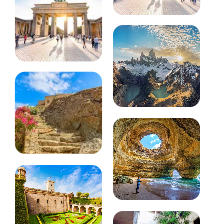The most beautiful villages in Brittany
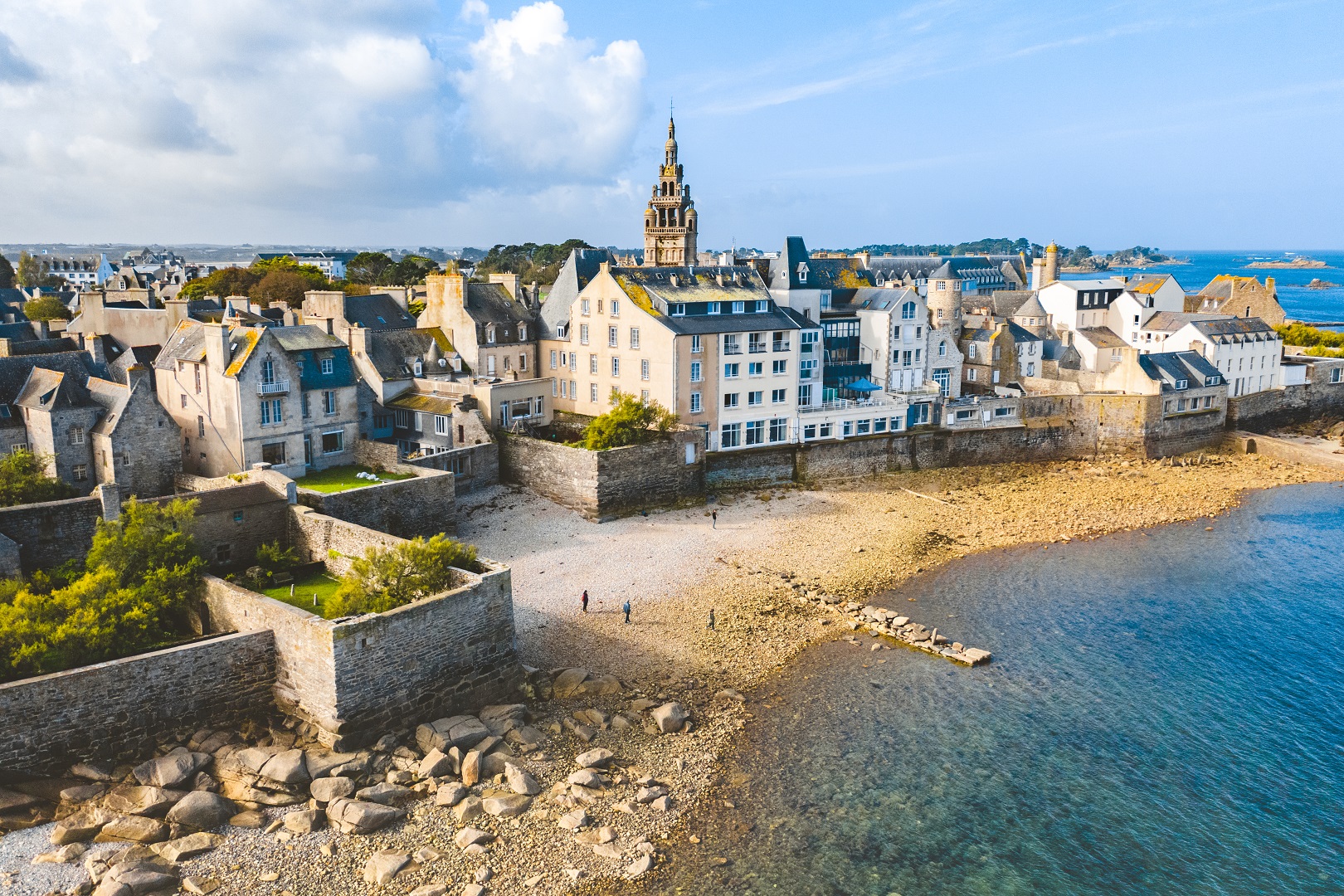
Brittany, a land of legends and traditions, reveals its treasures at the turn of every departmental road. Far off the beaten track, its authentic villages offer a journey back in time, where history blends with natural beauty. From the jagged coasts of Finistère to the verdant valleys of Morbihan, via the moors of Côtes-d’Armor and the forests of Ille-et-Vilaine, Brittany’s most beautiful villages reveal the soul of a region proud of its roots.
From granite houses with slate roofs to unspoilt fishing harbours and medieval villages, these villages, listed as some of the most beautiful in France or with the “Petites Cités de Caractère” (Small Towns of Character) label, make up an exceptional heritage. Each village in Brittany reveals its own unique personality: here the art of living of the old privateers, there the heritage of the weavers and merchants, elsewhere the imprint of the painters who came to seek inspiration.
Locronan, the unspoilt jewel of Finistère

A true journey back in time, Locronan embodies the very essence of Brittany’s most beautiful villages. Located just a few kilometres from Quimper, this Finistère village has managed to preserve its authentic character thanks to the vision of its inhabitants. Its Renaissance grey granite houses, cobbled streets and central square form a remarkable architectural ensemble that has seduced many film-makers.
The church of Saint-Ronan, a 15th-century Gothic jewel, dominates the village square, which is dotted with imposing merchant houses. These buildings bear witness to the past prosperity of Locronan, which was a major centre for the production of sailcloth. The village’s traditions continue to this day with the Grande Troménie, a religious procession held every six years.
As you stroll through the narrow streets of this Breton village, you’ll come across a host of craft shops perpetuating local know-how. The Locronan mountain, accessible via a hiking trail, offers an exceptional panorama over the Bay of Douarnenez and the Crozon peninsula.
Rochefort-en-Terre, the village in bloom in Morbihan

Voted “Favourite Village of the French” in 2016, Rochefort-en-Terre richly deserves its reputation as one of Brittany’s most beautiful villages. Perched on a rocky outcrop overlooking the Gueuzon valley, this Morbihan village enchants visitors with its bucolic setting and exceptional architectural heritage.
Geraniums cascade from the windows of the timber-framed houses, creating a living tableau that changes with the seasons. The Château de Rochefort-en-Terre, rebuilt in the early 20th century, now houses temporary exhibitions and a remarkable landscaped park dubbed “the painters’ garden”.
The church of Notre-Dame-de-la-Tronchaye boasts a mysterious stained-glass window depicting the Virgin breast-feeding the infant Jesus, a work that is unique in Brittany. The narrow streets of the village are full of art galleries and craft shops that perpetuate local traditions.
Moncontour, the smallest of the most beautiful
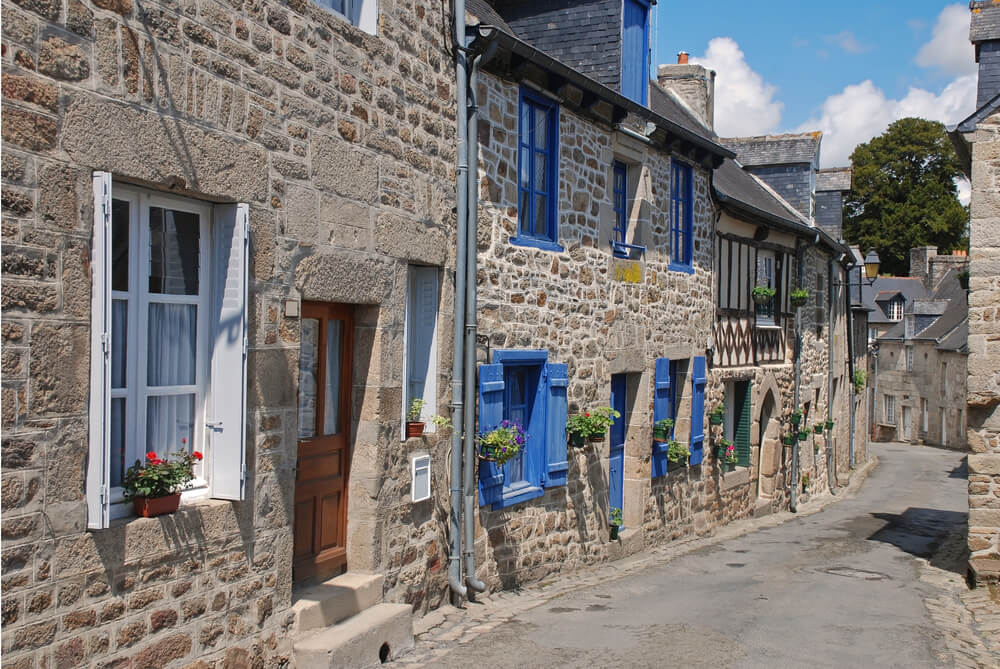
At just 48 hectares, Moncontour holds the record for being the smallest of France’s most beautiful villages. This medieval village in the Côtes-d’Armor region, a former stronghold of the Duchy of Penthièvre, has preserved its 13th-century ramparts and its original urban layout.
The church of Saint-Mathurin houses six remarkable stained glass windows that tell the story of the village and its inhabitants. The 15th and 16th century town houses bear witness to the past prosperity of Moncontour, enriched by the flax and hemp trade.
The Maison de la Chouannerie et de la Révolution retraces the turbulent history of this region during the wars of the West. The Rue Dell’Arte festival, held every summer, brings street art to life in the cobbled streets of the village.
Saint-Suliac, the fishing village on the River Rance

Listed as one of the most beautiful villages in France, Saint-Suliac has a charming, unspoilt authenticity. This fishing village in Ille-et-Vilaine, located on the Rance estuary, has retained its maritime character, with granite houses bearing evocative names and facades decorated with fishing nets.
The village’s narrow streets, which can only be explored on foot, wind past traditional houses to the parish church overlooking the estuary. The Dent de Gargantua menhir, a prehistoric relic, bears witness to the ancient occupation of the site.
The banks of the River Rance offer magnificent views over the estuary and invite you to take a contemplative stroll. Mont Garrot, which overlooks the village, preserves the remains of an ancient Viking camp and offers an exceptional panorama of the Rance valley.
Ploumanac’h, the village of pink rocks
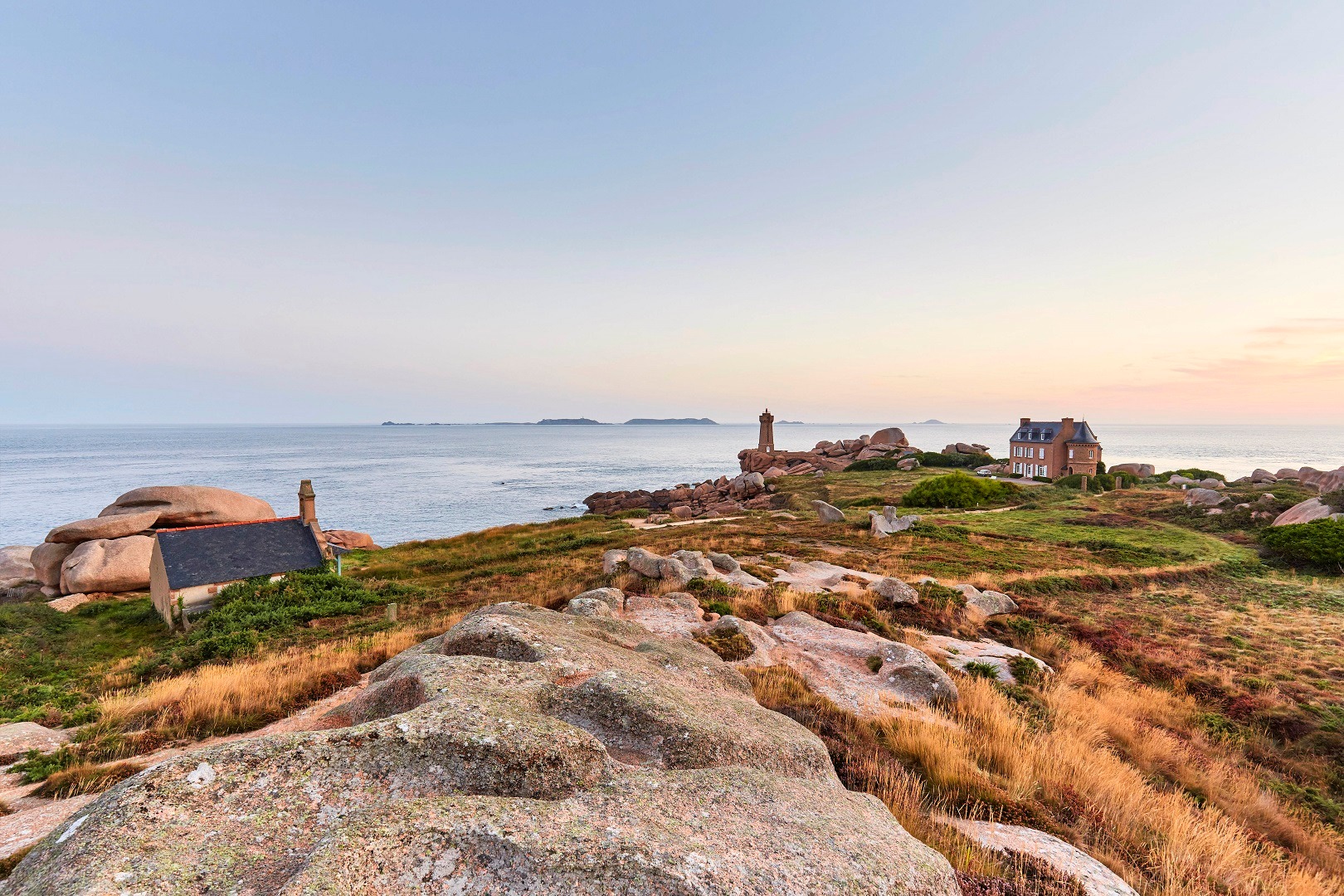
Voted “Favourite Village of the French” in 2015, Ploumanac’h captivates visitors with its extraordinary pink granite landscapes. This hamlet in the Côtes-d’Armor region, part of the commune of Perros-Guirec, offers a geological spectacle that is unique in the world.
The pink granite rocks, shaped by 300 million years of erosion, create a surreal landscape that changes colour with the light. The “sentier des douaniers” (customs path) allows you to discover these spectacular rock formations by following the coastline.
The chapel of Saint-Guirec, nestling between the rocks, watches over this exceptional landscape. The lighthouse at Ploumanac’h, built of pink granite, blends harmoniously into the unique natural setting for which this Breton village is famous.
Pont-Aven, the city of painters
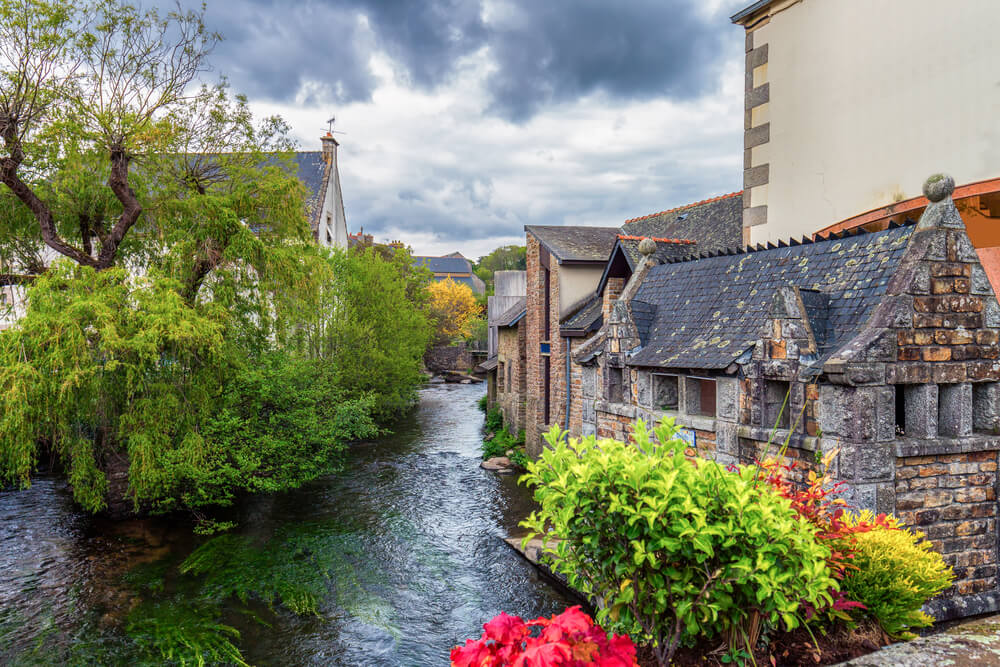
Immortalised by Paul Gauguin and the Pont-Aven School, this village in Finistère is one of the most beautiful in Brittany for its exceptional artistic heritage. Nestling on the Aven estuary, Pont-Aven has attracted many painters seeking inspiration in its bucolic landscapes.
The Bois d’Amour, a favourite haunt of artists, still retains the poetic atmosphere that seduced the Impressionists. The old watermills, of which there were once fourteen according to the local saying, still dot the course of the Aven.
The Musée de Pont-Aven traces the history of the Pont-Aven School and presents works by artists who have left their mark on the history of modern art. The contemporary art galleries, of which there are around sixty, perpetuate the artistic tradition of the village.
Bécherel, the city of books
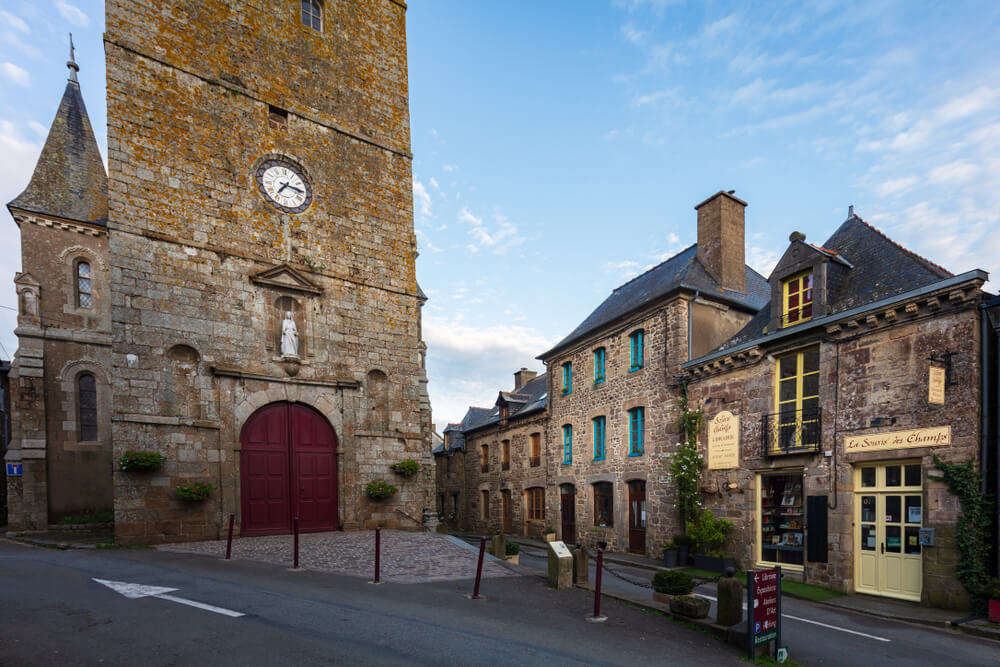
France’s first book town since 1989, Bécherel occupies a special place among Brittany’s most beautiful villages. Perched on a promontory overlooking the Rance valley, this small town in Ille-et-Vilaine has around ten bookshops for fewer than 800 inhabitants.
The granite houses of the historic centre are home to literary treasures in specialist bookshops, colour-coded according to their field. The Donjon bookshop, housed in a medieval tower, offers a unique experience for lovers of old books.
The 15th-century church of Notre-Dame dominates the village, offering panoramic views over the surrounding countryside. The annual Book Festival, held in spring, transforms the village into a huge open-air literary fair.
Roscoff, the port of the Johnnies
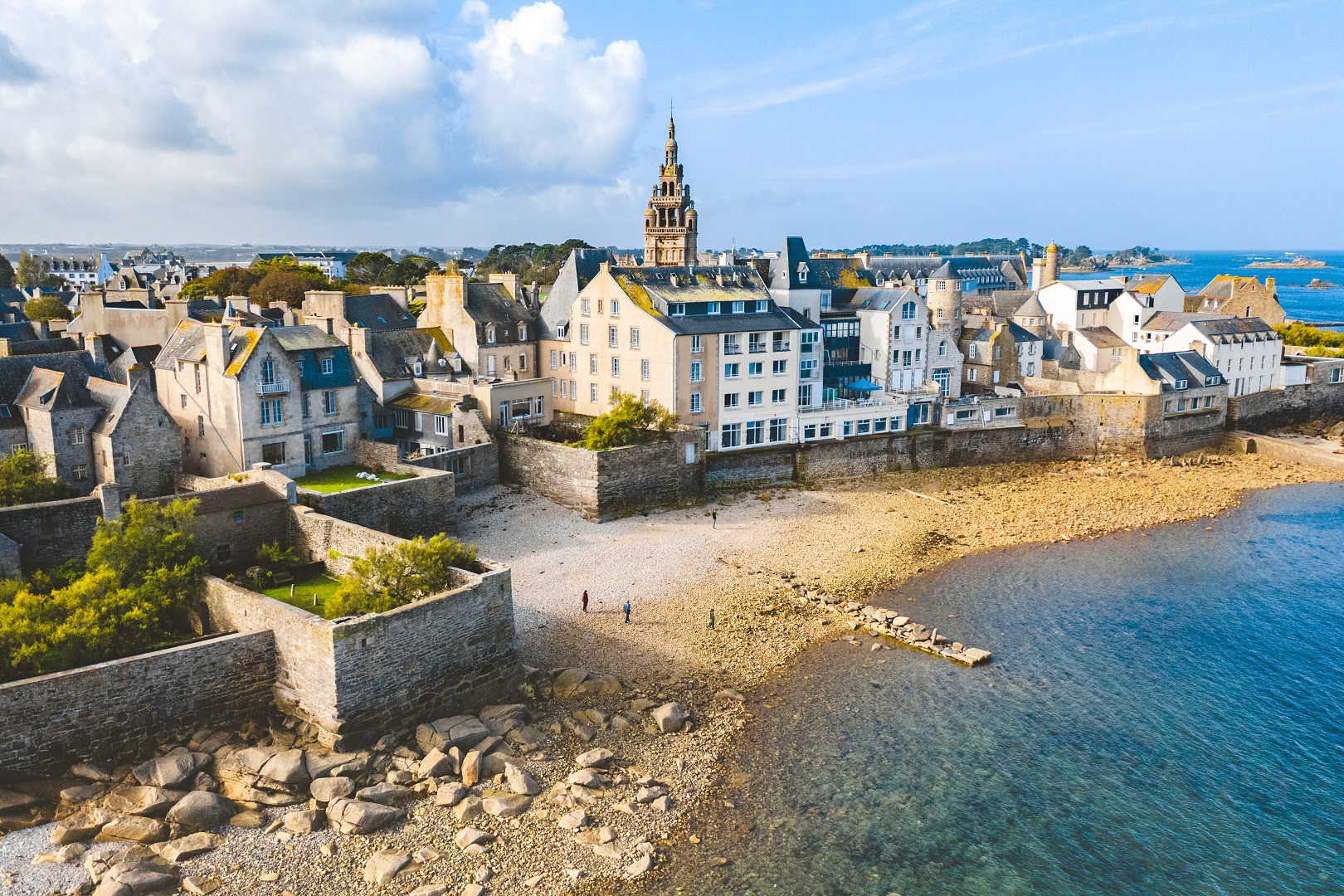
Built on a peninsula overlooking the English Channel, Roscoff’s exceptional maritime heritage makes it one of Brittany’s most beautiful villages. This town in Finistère, the birthplace of thalassotherapy, has retained its character as a 16th-century merchant port.
The shipowners’ houses, built of Kersanton granite, bear witness to Roscoff’s past prosperity. The port, from which the famous “Johnnies” used to set sail to sell their pink onions in England, has retained this commercial tradition, with ferry links to Great Britain.
The church of Notre-Dame de Kroa-Baz, with its Renaissance bell tower, overlooks the port and offers a panoramic view of the Batz archipelago. Roscoff’s exotic garden, created thanks to the mild oceanic climate, is home to a collection of plants that is unique in Brittany.
La Gacilly, the village of Yves Rocher
Set in the verdant Aff valley, La Gacilly is one of Brittany’s most beautiful villages, with its unspoilt natural setting. This Morbihan village, birthplace of the Yves Rocher brand, has managed to reconcile economic development with environmental conservation.
The historic centre, with its timber-framed houses and flower-filled gardens, reflects the Breton art of living. The annual photo festival turns the village into an open-air art gallery, attracting visitors from all over the world.
The Maison Yves Rocher and its immersive museum tell the story of the company that was born in this village in 1959. The botanical gardens and production greenhouses bear witness to the ecological commitment of this pioneering town in terms of sustainable development.
Malestroit, the pearl of Oust
Nicknamed “the pearl of the Oust”, Malestroit is one of Brittany’s most beautiful villages, thanks to its remarkable architectural heritage. This Morbihan village, a stopover on the Nantes-Brest canal, reveals fifteen centuries of history through its cobbled streets.
The fifty-seven timber-framed houses in the historic centre create an authentic medieval setting. The church of Saint-Gilles, with its flamboyant Gothic architecture, dominates the Place du Bouffay, where markets used to be held.
The marina, built on the site of the old trading port, is a great way to discover the village from the waters of the Oust. The Kerdalo gardens, on the banks of the river, offer an exceptional botanical walk in a romantic setting.
Josselin, the Château of Rohan
Dominated by its thousand-year-old castle, Josselin is one of Brittany’s most beautiful villages, thanks to the majesty of its architectural heritage. Owned by the Rohan family for over a thousand years, this town in the Morbihan region offers a journey through the history of the Breton nobility.
Josselin Castle, with its three imposing towers reflected in the waters of the River Oust, is one of the most beautiful castles in Brittany. Its Renaissance facades, adorned with elaborate dormer windows, contrast with the austerity of the medieval towers.
The historic centre, with its half-timbered houses and cobbled streets, is an invitation to discover local traditions. The basilica of Notre-Dame-du-Roncier, a place of pilgrimage since the 11th century, houses a miraculous statue venerated by the Bretons.
Dinan, the medieval city with its thousand-year-old ramparts
Dominated by its 14th-century castle, Dinan’s rich medieval heritage makes it one of Brittany’s most beautiful villages. Its almost three-kilometre ramparts, the longest in Brittany, encircle a remarkably well-preserved historic centre.
Rue du Jerzual, with its half-timbered houses and cobbled streets, leads down to the marina on the banks of the River Rance. This picturesque district is home to a number of arts and craftspeople who perpetuate local traditions. The Saint-Sauveur basilica is a harmonious blend of Romanesque and Gothic styles, while the Place des Merciers boasts some magnificent medieval houses.
The port of Dinan, linked to the sea by the River Rance, offers a bucolic stroll along its banks. History buffs will love the many guided tours that tell the epic story of this ducal town, the scene of many episodes in Breton history.
As you explore these exceptional villages, you’ll discover that Brittany’s most beautiful villages are more than just postcards frozen in time. They live, breathe and perpetuate Breton traditions while adapting to contemporary challenges. Each village tells a unique story, that of the men and women who have shaped these landscapes over the centuries.
These Breton villages, whether listed as one of the most beautiful villages in France or with the “Petites Cités de Caractère” label, represent a living heritage that deserves to be discovered and preserved. Their authenticity, their beauty and their ability to move make them essential destinations for all lovers of authentic Brittany.
In conclusion, Brittany’s most beautiful villages offer an initiatory journey to the heart of the Breton soul. From Locronan to Roscoff, via Rochefort-en-Terre and Saint-Suliac, these exceptional villages reveal the richness of a heritage that has been preserved and passed on with passion. Let the Navaway itineraries be your guide to discover these Breton treasures and enjoy an authentic experience in the land of legends and traditions.
When is the best time to visit Brittany’s most beautiful villages?
Brittany can be visited all year round, but the period from May to September offers the best weather conditions. Summer is the time to take full advantage of local festivals and water sports, while autumn reveals the shimmering colours of Brittany’s landscapes. The quieter winter months are perfect for heritage lovers who want to visit the villages without the crowds.
How do you organise a discovery tour of Brittany’s most beautiful villages?
To discover the most beautiful villages in Brittany, plan to spend at least a week there. Start in Finistère with Locronan and Pont-Aven, then head to Côtes-d’Armor for Moncontour and Ploumanac’h. Continue through Ille-et-Vilaine to Dinan, Saint-Suliac and Bécherel, before finishing in Morbihan with Rochefort-en-Terre, Malestroit and Josselin. This way of organising your tour means you don’t have to travel far, while still discovering the diversity of Brittany’s terroirs.
Which Breton villages are the easiest to reach from Paris?
From Paris, the most accessible villages in Brittany are those in Ille-et-Vilaine, such as Dinan, Saint-Suliac and Bécherel, easily reached via Rennes by TGV. Rochefort-en-Terre and Malestroit in Morbihan are also well served from Vannes station. For villages in Finistère such as Locronan or Pont-Aven, there is an additional journey from Quimper or Brest.
200 audioguided tours for cities all around the world
Download